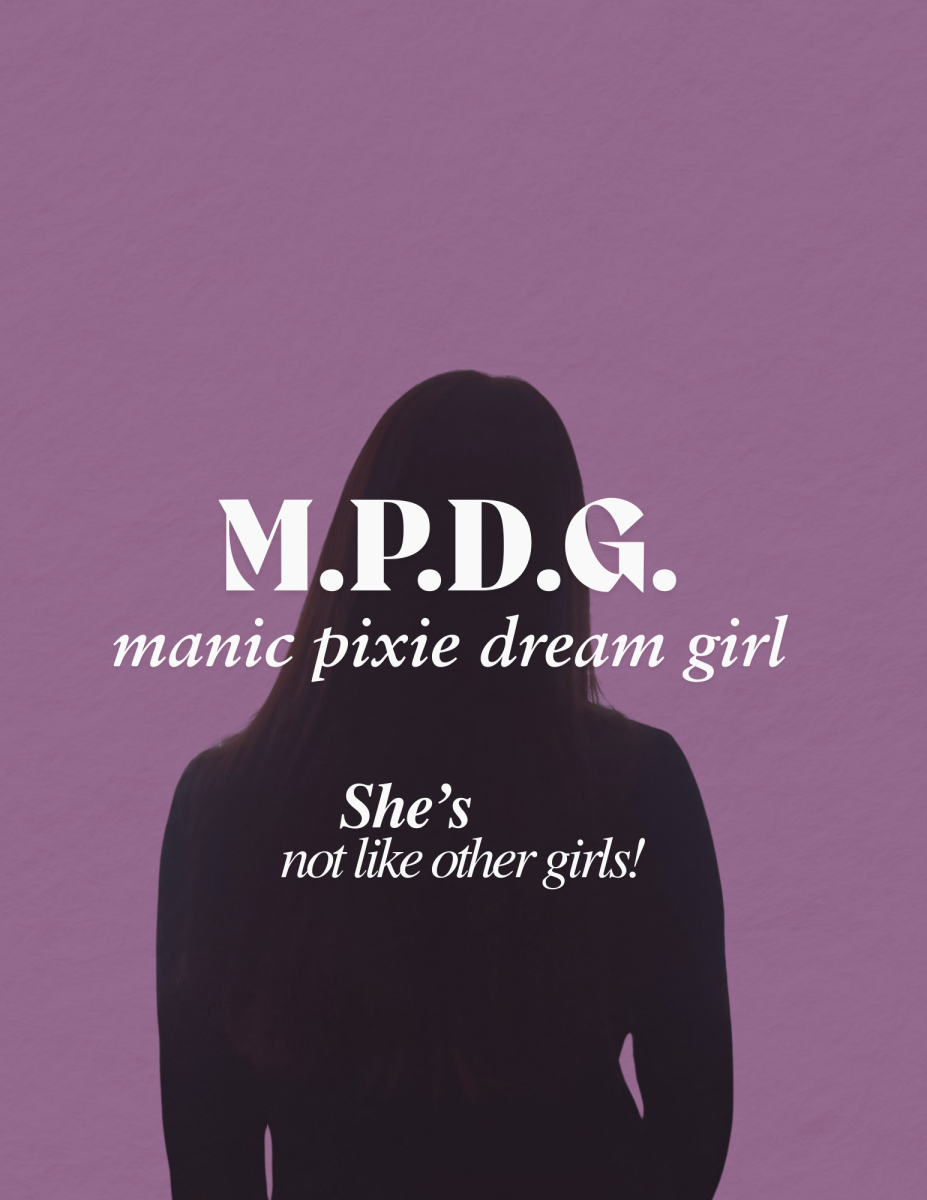A love story; it’s one of the most popular film tropes seen to date, racking up billions in the box office time and time again. These stories usually follow a typical outline; boy meets girl, boy likes girl, boy goes after girl, and boy and girl live happily ever after. These heartwarming stories draw viewers in with their swoon-worthy leads and timeless plot. While these are usually sweet and innocent stories ending in joy for the two characters, there is one trope in Hollywood that tends to write a slightly different narrative.
The MPDG, or Manic Pixie Dream Girl, trope was first coined by Film Critic Nathan Rabin in 2007 when discussing Kirsten Dunst’s performance as Claire Colburn in Elizabethtown. Rabin wrote, “Dunst embodies the type of character I like to call the Manic Pixie Dream Girl, a character who exists solely in the fevered imaginations of sensitive writer-directors to teach broodingly soulful young men to embrace life and its mysteries.” The idea of having a unique female lead shaping a male’s views can be quite appealing at first glance, but after a deeper dive into the realities of this trope, it can be very damaging to the women of which the trope is brought upon.
The MPDG archetype is widely known in film and pop culture for their eccentric, quirky personalities and unique appearance that challenges societal norms and what would be expected from a “usual” love interest. Whether it’s Summer Finn in (500) Days of Summer with her distinctive 1950’s style and exceptional music taste, or the guarded and independent Romana Flowers in Scott Pilgrim vs. the World with her constant change of colorful hairdos, MPDG can come in a variety of forms that depict “unconventional attractiveness” and the denial of cultural standards.
But once these women come into contact with their male counterparts, everything changes.
The MPDG character is reduced to a one-dimensional supporting role, being used as a device to assist the male lead in exploring his “happy ending”, without ever getting the satisfaction of her own. This sends an incredibly harmful message to young viewers; that men will always be the protagonist and women exist solely to be on stand-by for them. These archetypes, whether we want to accept it or not, have real world implications regarding the very real realities of relationships
In fact, the MPDG could even be turned into a verb: being manic pixie dream girl-ed, and you can watch this trope become a reality in your own relationships. Certain men will put these “different” women atop a pedestal, romanticizing the idea of her instead of loving who she actually is. Men will then continue to use these women to learn something about life or themselves, using her as a pawn for their individuality complex, and once they have gotten a satisfactory resolution, the story is over; no one gives a second thought about her ending.
Having this stereotype placed upon young women can be extremely damaging to them for several other reasons, like romanticized mental health issues and reinforcement of gender stereotypes.
MPDG’s can sometimes display unpredictable, or unstable behavior, which is commonly romanticized as charming or even endearing. This can contribute to the trivialization of real mental health issues, normalizing the illnesses and having young women endure these struggles alone because they view it as mere “quirkiness.” Furthermore, the MPDG trope insists misogynistic and stereotypical ideas about women being unpredictable, overly emotional, or irrational. By glorifying this limited representation, it urges the notion that women exist to inspire a man and should neglect their own aspirations.
Since Rabin’s review of this character trend, the Manic Pixie Dream girl trope has, thankfully, decreased in recent years. More films with independent female leads have come around, giving these characters greater stories and achievements, without the help of a man. While the Manic Pixie Dream Girl is fun in thought, it’s important to have diverse, self-supporting female leads who can break this haunting stereotype for the generations to come.


